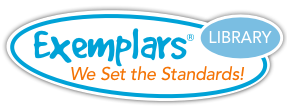Grade 3 - Measurement Unit
Standards covered:
- 3.6 Geometry and measurement
-
3.6C
Determine the area of rectangles with whole number side lengths in problems using multiplication related to the number of rows times the number of unit squares in each row.
-
3.6D
Decompose composite figures formed by rectangles into non-overlapping rectangles to determine the area of the original figure using the additive property of area.
- 3.7 Geometry and measurement
-
3.7B
Determine the perimeter of a polygon or a missing length when given perimeter and remaining side lengths in problems.
-
3.7C
Determine the solutions to problems involving addition and subtraction of time intervals in minutes using pictorial models or tools such as a 15-minute event plus a 30-minute event equals 45 minutes.
-
3.7D
Determine when it is appropriate to use measurements of liquid volume (capacity) or weight.
-
3.7E
Determine liquid volume (capacity) or weight using appropriate units and tools.
The Measurement Unit involves identifying the attribute being measured (such as length, area, time, capacity or weight); selecting an appropriate unit (such as a unit of length, area, time, capacity or weight) and comparing that unit with what is being measured. Questions to answer may include:
- How does a unit of length differ from a unit of area?
- How can you use the operations of addition, subtraction, multiplication and/or division to solve problems involving the measurement of different attributes?
Summative Assessment Task
Students determine how long it will take Mary to do her chores.
Students determine all the possible dimensions of a rectangular pen that can be made for a horse named Star and the one that has the largest area.
Instructional Tasks/Formative Assessments
Students determine which tool is appropriate to weigh a box turtle and which tool is appropriate to calculate the amount of vitamins needed to keep the turtle healthy. Students will also determine the weight of the box turtle and how many drops of vitamins are needed for the turtle's water dish.
Students determine how long a hippopotamus can remain under water in a four hour period.
Given specific dimensions students determine the appropriate way for finding the area of a rectangular box top.
Students determine how much string is needed to outline where a new shed will be built. Students also determine how many tiles are needed to cover the floor of the shed.
Students determine how many times water bottles need to be filled so Mary and her mom drink the recommended amount of water each day.
Students determine what time Mindy goes to bed after doing a set number of activities after school.
Given 20 sections of fence, students determine all the possible sizes of pens for a pet lizard, including the pen with the most room to exercise. Students also determine the amount of money spent on the 20 sections of fence.
Using given dimensions, students determine how many squares are needed to make a patchwork wall design.
Students determine how many pieces of construction paper are needed for a new bulletin board.
Given 26 sections of fence, students determine possible dimensions for Mary's vegetable garden.

The N/A classification refers to TEKS Standards that cannot be assessed through problem solving.
For this reason, tasks have not been included for these particular standards.
K.7A K.7B K.9B K.9C K.9D